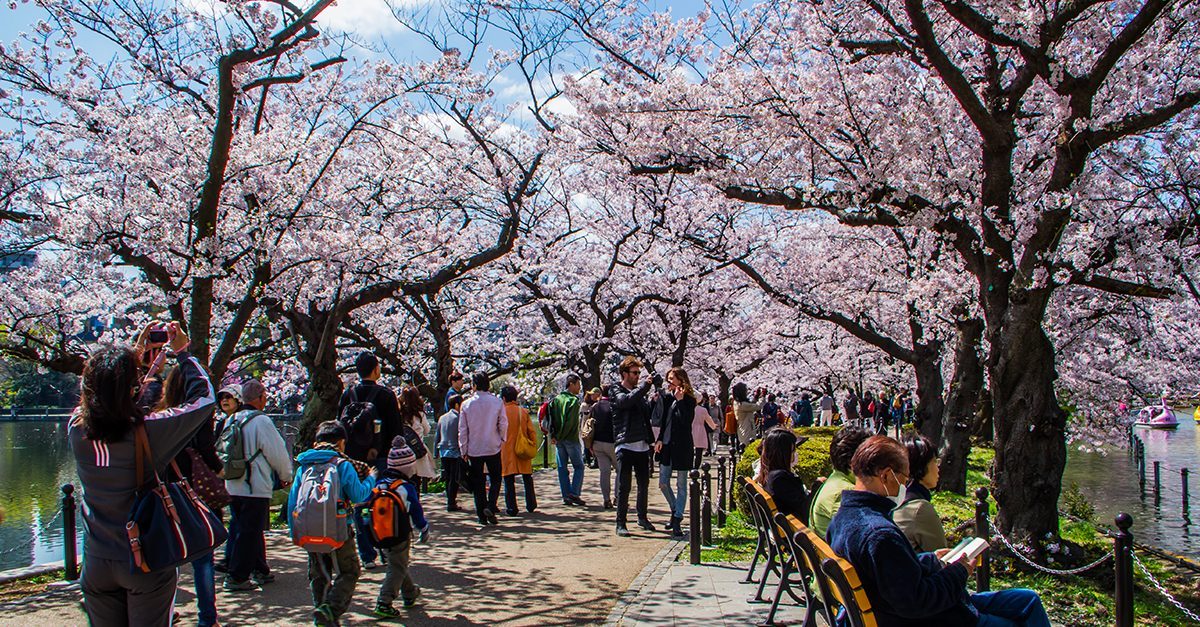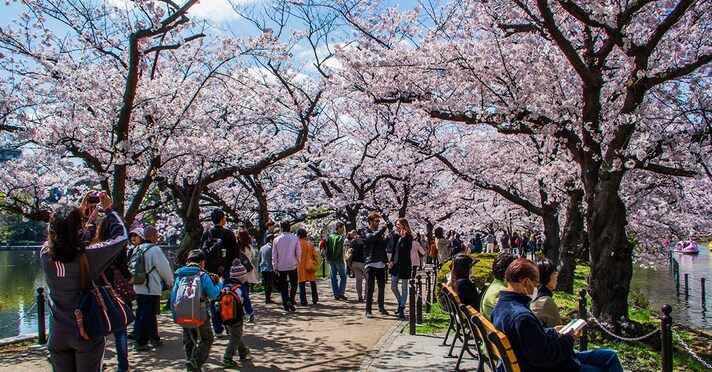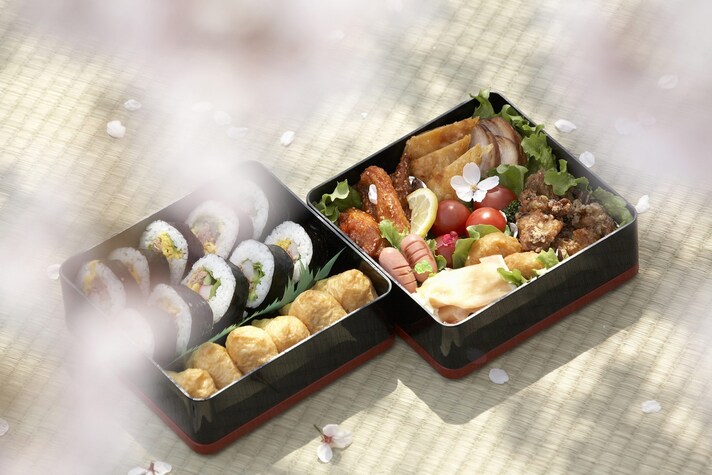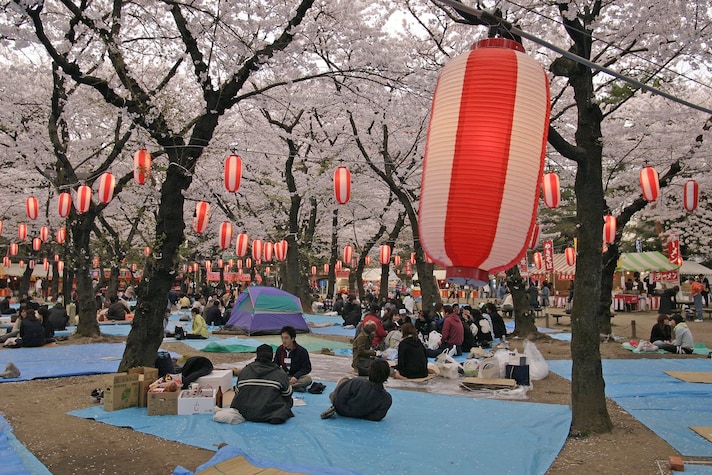What is Hanami? The Age-Old Japanese Tradition That Pays Homage to The Cherry Trees With a Picnic
A thousand-year-old Japanese tradition that combines a passion for food and the beauty of nature. Hanami is designed to enjoy the cherry blossoms in spring, with a delicious picnic based on traditional dishes. Everything, however, is revisited in a "sakura" key: many foods are flavored with cherry blossoms, there is pink and beauty everywhere.
;Resize,width=742;)
A thousand-year-old tradition that combines food and nature: this is hanami. The custom is celebrated in the evening, in spring and refers to the blossoming of the trees. The literal translation of "hanami" would be "looking at the flowers" but now it refers only to the blossoming of the Japanese cherry trees, the fantastic sakura, which attract millions of tourists to the Land of the Rising Sun every year.
The tradition is deeply felt in Japan and all the emigrants return home to enjoy the beauty of the event and a sumptuous picnic in nature. Food is fundamental in this tradition, almost as much as flowers, even if there are no precise rituals regarding hanami. Generally the Japanese limit themselves to eating and drinking pink things, which remind of cherries and flowers.
Flower Baskets for Picnics on The Lawn
Hanami takes up a large part of spring, the entire period of the sakura blossoming that goes from early April in the southern areas to mid-May in the north. The festival consists of admiring the blossoming while eating a substantial picnic in the shade of the sakura in bloom. The celebration takes place in the evening, in some cases at night, so as to admire all the cherry trees specially illuminated by lights and stars: in this case it takes the name of Yozakura.

During the picnic you can never miss dango, which for the occasion take the name of hanami-dango, and sakura-mochi. The former are rice dumplings skewered on sticks in groups of 3-5 (traditionally 5) and covered with a sweet, glassy soy sauce glaze with strong burnt hints. Mochi are the classic rice cakes, sugar and corn starch.
Both preparations are different from their classic versions because all hanami foods have flavors that recall sakura flowers and are often decorated with these little flowers. Both dango and mochi are found in all supermarkets in the country, along with drinks, sweets and ice cream with a "cherry blossom" flavor. Many Japanese prefer to prepare dishes at home to enjoy in the evening and fortunately there are still many small shops, similar to American grocery stores, that put sakura flowers in salt, so as to preserve them and use them to flavor tea, beer, salty and sweet foods, or even just water.

Larger markets and shopping centres offer ready-made hanami bento, the classic lunch boxes, which are decorated with real or drawn flowers for the occasion.
What can you find in a bento? Onigiri are a must, that sort of "arancini" that you often see in manga and anime; the same goes for tamagoyaki, Japanese omelettes, and edamame, unripe soy beans , perfect for nibbling under a starry sky. Among the traditional wagashi sweets, in addition to the two mentioned, many people bring dorayaki with them, tasty and easy to carry around.
The traditional drink is hanami -zake, a cup of sake with a freshly fallen cherry blossom immersed inside: a very scenic, fascinating, evocative drink. Another typical drink is sakura chu-hi: an alcoholic drink made with shochu (a rice distillate that vaguely resembles grappa) and soda, obviously flavoured with cherry flavour. For the little ones there is cherry blossom green tea.
With globalization, the offer has increased dramatically: Coca-Cola sells a cherry version in Japan at this time of year, with pink packaging, the same goes for Starbucks in its stores with coffee. Asahi, the best-selling Japanese beer in the world, offers a light blonde with hints of cherry and the major fruit juice companies do the same, with packaging designed for the holiday. In recent years, Italian rosé wine has also been making its entrance on the Japanese market: but we are still talking about very small companies, supported by true wine enthusiasts.

The millenary tradition is fundamental for the Japanese and hanami must be celebrated as it should be. The sakura is a fundamental element for the culture of the Land of the Rising Sun: the brevity of its life, its delicacy, make this flower a perfect metaphor for the fragility of existence, its beauty and finally the rebirth to which everyone aspires.
Hanami in The U.S.
Hanami, the Japanese tradition of enjoying the beauty of cherry blossoms, is celebrated in the U.S., particularly in areas with large Japanese communities or parks known for their cherry trees. The celebration is often centered around picnics, outdoor gatherings, and appreciating the short-lived beauty of the cherry blossoms during spring.
Many cities across the U.S. host Hanami festivals or cherry blossom festivals, the most notable being in Washington, D.C., where the National Cherry Blossom Festival attracts thousands of visitors every year. While not as ingrained in American culture as it is in Japan, Hanami has gained popularity due to the cultural exchange and the beauty of cherry blossoms, making it a seasonal celebration in various parts of the U.S.
;Resize,width=767;)
;Resize,width=712;)
;Resize,width=712;)
;Resize,width=712;)
